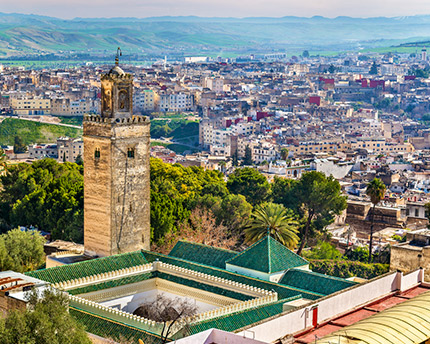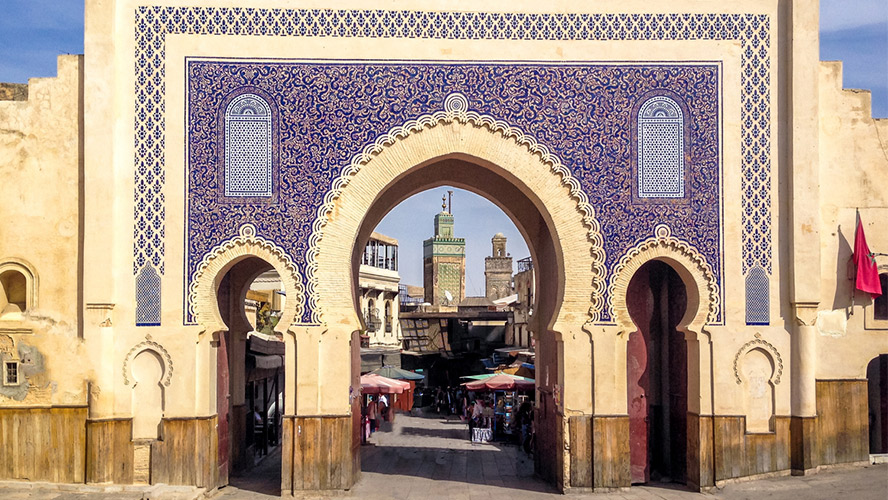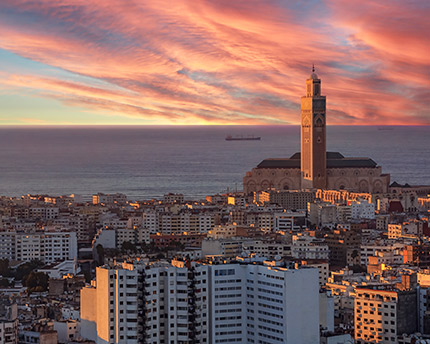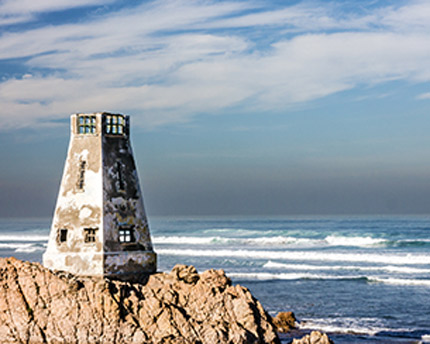Fez is one of Morocco’s imperial cities and is a fascinating place that shouldn’t be missed on your trip. The third most populated city in Morocco is also its cultural and religious centre; it was the kingdom’s capital during several periods of time and has one of its most important medinas. Read on to find out what to see in Fez: the essential places that you should visit on your trip.
The origins of Fez can be traced back to 789 when it was founded by Idris I, a descendent of Mohammed and the founder of Morocco. The creation of one of the first universities in the world, immigration from Al-Andalus and Tunisia, and its different periods as the kingdom’s capital, made Fez one of the most important cities in North Africa.
Welcome to Fez, one of the most fascinating cities in Morocco!
Fes El Bali Medina
A trip to Fez should start with its medina, a UNESCO World Heritage Site and the largest pedestrian zone in the world. This shopping and haggling paradise has as many as 9,000 narrow streets and wins the hearts of visitors with its colours, sounds, scents and flavours: it’s a real test for the five senses.
Fes El Bali Medina is the old centre of Fez and is surrounded by 15 km of impressive walls. The area covers 300 hectares and is an enormous space packed with mosques, madrasas (Koranic schools) and palaces where you can get lost amid the streets and feel as though you’ve travelled back in time.
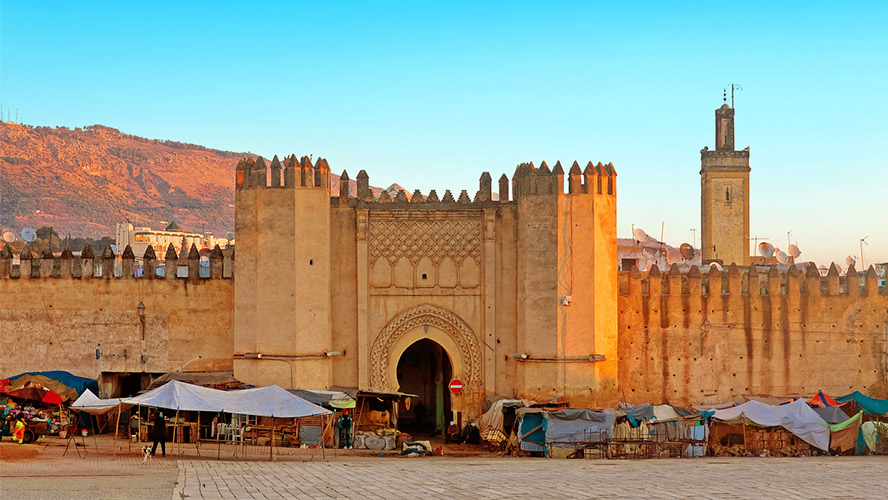
Madrasa Bou Inania
Madrasa Bou Inania is tucked away in the medina; it was built in the 14th century and is one of the leading educational institutions in Morocco. The elegant building is one of the finest examples of Fez’s golden past to endure until modern times in an excellent state of conservation and, fortunately, it’s open to visitors.
.
Chouwara Tannery
While you’re inside the medina, you won’t fail to notice the intense, and not entirely pleasant, smells from Chouwara Tannery, the largest of the four tanneries to still exist in Fes El Bali. Here, natural dyes are applied to leather from animals such as lamb, ox and camel to dye it so it can be used to make products such as bags, shoes and coats.
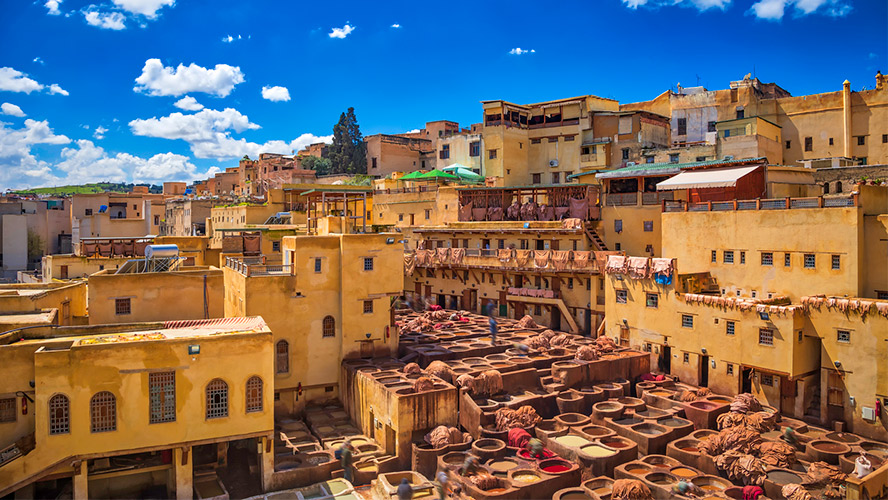
Bab Bou Jeloud, the Blue Gate
You enter the medina through Bab Bou Jeloud, the Blue Gate, the beautiful and iconic entrance to the old city. This huge gate with three horseshoe arches was built in 1913 by the French during the Protectorate to give the medina a respectable and more majestic entrance.
Bab Boujeloud
Fez’s fountains
Fez was one of the first cities in the world to have a water supply, which was created back in the 11th century. Today, this legacy can still be seen in the numerous public fountains that are dotted along the streets. One of the most beautiful is the Nejjarine Fountain, in the medina, which has lovely tiles and a stone horseshoe arch.
Zawiya of Moulay Idris II
Another emblematic place in Fez and Morocco is the Zawiya of Moulay Idris II, king and son of Idris I, founder of the city and country. Idris II governed between 807 and 828 as part of the Idrisid dynasty. An intact corpse was found in the tomb of the king five centuries after his death and was identified as the king’s body. This led to the construction of the mausoleum, which is a holy place for Moroccans and is open 24 hours a day.
The interior is decorated in an elegant, traditionally Arab style with mosaics, tiles and stucco, but it can only be visited by Muslims.
Madrasa Al Attarine
One of the most beautiful madrasas in Fez, built between 1323 and 1325. It is remarkable for its elegant decoration and courtyard, which has a marble fountain and sumptuous cedar-wood domes.
H2 Al-Qarawiyyin Mosque
Al-Qarawiyyin Mosque is next to Madrasa Al Attarine and is the most important mosque in Fez. It was built in 859 and is thought to be the oldest university in the world, older even than Bologna or Oxford. For hundreds of years, Al-Qarawiyyin Mosque attracted students from around the world and a collection of over 300,000 manuscripts was gathered here.
Today, the mosque is still in use and, although only Muslims are permitted entry, the building itself is a masterpiece.
Place R’cif
Place R’Cif is home to one of the gates to Fez medina and is commonly passed through as people head towards the old part of the city. Just watching for a short while gives you an idea of what the continuous bustle of old Fez is like.
Fez Royal Palace
As an imperial city and former capital, Fez also has a royal palace, Dar al-Makhzen. It was built in different periods but mostly dates from the current Alawi Dynasty. The interior isn’t open to visitors because it’s the king’s official residence, but you can admire the beauty of its gates and exterior architecture from the outside.
Jewish Quarter or Mellah
Fez’s Jewish Quarter or Mellah has certain features that differentiate it from the Muslim areas, such as houses with galleries and balconies. The Mellah is close to the Royal Palace and was built here to ensure it had the sultan’s protection.
Jnan Sbil Gardens
Built in the 19th century, the Jnan Sbil Gardens are at the foot of the medina and have important plant species, fountains and pools. Today they are a wonderful, seven-hectare haven that is highly popular among residents.
Fez souks
Fez has several souks and each one specialises in a certain type of product. For example, Henna souk specialises in cosmetics, while Attarine souk has spices and other food products.
Where to eat in Fez
Fez Medina is a wonderful place to try traditional food at one of its many restaurants. Below is a brief selection of some of the best places to eat in Fez and the medina:
- Chez Rachid: local food at reasonable prices.
- Restaurant Ouliya: one of the best restaurants in Fez. It has a terrace with unique views over the city.
- Dar Tajine: a little more expensive, this restaurant is highly recommended thanks to its extensive menu.
Advice when travelling to Fez
Fez has enough attractions for you to easily spend two or three days in the city. Visiting the main monuments and parts of the city, exploring the shops and enjoying the food are reason enough to enjoy Fez at a leisurely pace.
Although it’s in the north of Morocco, its inland location means that October and November are good months to visit, when the heat has lessened and the weather is fine
Like other Moroccan cities, Fez is mostly safe. However, you should still take care at night, once the shops have closed.
You should also remember that, unless you are Muslim, you won’t be able to enter most of the mosques in Fez.
Where to stay in Fez
The Barceló Fès Medina is a wonderful accommodation option in Fez. This modern, four-star hotel with an urban vibe is two kilometres from the medina and a five-minute walk from the train station.
The hotel perfectly combines leisure and wellbeing. It has an outdoor pool that is open for guests all year round, a terrace, solarium and gym. The restaurant and Jazz Bar are perfect for evenings when you want to enjoy your holiday but would prefer to stay in.




































































